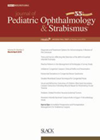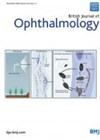BEST stereotest
BEST (Bernell Evaluation of Stereopsis Test) is a filter-free method that uses lenticular technology. The test presents colourful animal targets ranging from 400 to 40”. Stereoacuity was measured with BEST and Randot in 100 children aged 3.3-17.8 years, mean 8.52...
CHARGE syndrome features
CHARGE syndrome (CS) includes coloboma, heart defects, atresia of the choanae, retardation of growth and development, genital and urinary anomalies and ear anomalies. The authors developed an original self-administered questionnaire (VISIOcharge) for patients with CS and used it to evaluate...
Strabismus surgery outcomes in Zika syndrome
This study describes the surgical treatment for five children with congenital Zika syndrome and horizontal strabismus. Six-month follow-up outcomes are reported. There were three females and two males with mean age at surgery of 36.4 ±0.9 months. All had history...
Perceptual learning treatment for amblyopia
The authors previously conducted a feasibility study examining the potential benefit of a self-administered at-home use of a tablet-based perceptual learning (PL) game. Visual stimuli were presented in various orientations and spatial frequency in a game-play format. This study evaluates...
Profile of sports-related ocular trauma
The authors conducted a previous study on the epidemiology of sports-related ocular trauma in Quebec. In this study they aim to gather further information on presentation via ophthalmology and emergency departments. They undertook a follow-up study from a tertiary care...
Guideline considerations for management of paediatric traumatic cataract
This study aimed to develop guidelines for preoperative decision-making and perioperative management of paediatric traumatic cataract patients. A 24-question survey was designed to assess surgeon background, preoperative planning and testing, surgical timing, intraoperative techniques and postoperative management. Anonymous responses were...
Profile of sympathetic ophthalmia (SO)
The authors undertook this study to examine the clinical profile of patients aged <18 years with SO over the past 20 years. This was a hospital-based retrospective study from 1997 to 2017. SO is a diagnosis of bilateral panuveitis following...
Correlation of parent observations vs. clinical measures of exotropia
The purpose of this study was to compare the parental observations with the clinical evaluation findings in paediatric patients with intermittent exotropia and to determine the clinical factors associated with the parental observations. The study included 100 parents of 95...
Effect of low-dose atropine on myopia progression
A randomised study to evaluate the effects of 0.01% and 0.02% atropine eye drops (one drop once nightly to both eyes) on myopic progression, pupil diameter and accommodative amplitude in myopic patients. Four hundred myopic children were divided into three...
Secondary glaucoma post paediatric cataract surgery
This retrospective observational consecutive case series assessed the incidence and risk factors associated with developing glaucoma after paediatric cataract surgery with primary intraocular lens (IOL) implantation. They reviewed 136 children (199 eyes) who underwent paediatric cataract surgery before the age...
Retinoblastoma in older children
Retinoblastoma is the most common ophthalmic malignancy in childhood and over 90% are diagnosed before the age of five years. It is not often suspected in older children given its rarity and unusual clinical findings which complicates the diagnosis. The...
Ophthalmology practice during COVID-19
The purpose of this study was to share the experiences in treating paediatric ophthalmology patients during the pandemic and to report institution guidelines. A flowchart was devised for telephone triage and subsequent follow-up of patients through telemedicine or face to...









